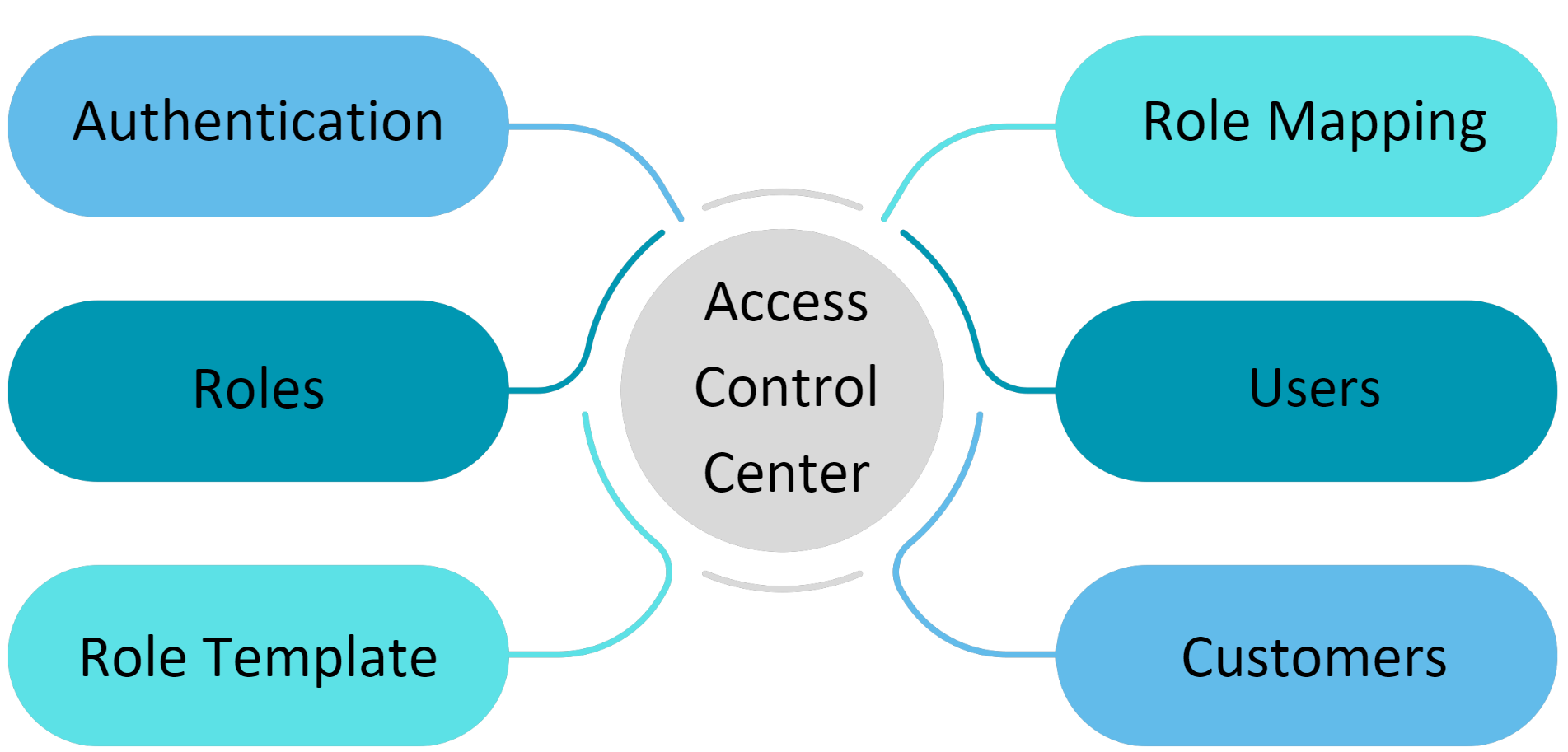The Access Control Center in the Apex platform is your go-to hub for configuring authentication methods and managing user roles with unmatched precision. It supports various authentication methods such as form login, SAML, OAuth, and OpenID Connect, ensuring robust security tailored to business needs. It empowers organizations to seamlessly create and manage different user personas, role templates, and map the role templates to the personas, assigning permissions, and setting up persona-specific access levels, thereby enhancing role-based access control. It also simplifies user management, making it easy to create and manage users. Additionally, it allows you to configure customer profiles with whom the organization transacts regularly, thereby enhancing service delivery and operational efficiency.
There are 6 key components in Apex Access control center!

Authentication: Ensuring rock-solid security tailored to your business is all about verifying user identities through a dependable authentication service. Here’s how you can configure it in just four steps: Start by defining essential details like domain, subdomain, and URL. Next, choose from versatile authentication types like SAML, OAuth, and OpenID. Then, configure your chosen authentication method with ease. And to top it off, customize your login screen using layouts and widgets for a personalized touch. It’s your one-stop solution for streamlined and secure authentication!
Roles: Roles and Role Type are the cornerstone of robust user access management systems. Role Type categorizes roles based on responsibilities and access levels, ensuring crystal-clear organization. Meanwhile, Roles define precise permissions for tasks and resource access, empowering users securely and seamlessly.
Role Template: The Role Template is your key to creating diverse personas across platforms and applications, each with unique rights and access levels. As the Super Admin, you wield ultimate control over all features and screens, ensuring seamless permissions for roles like Administrator, End User, Approver, and Analyst. This default setup guarantees streamlined management of user roles and permissions across the entire platform.
Role Mapping: Role Mapping ensures that users are granted precise rights and permissions aligned with their roles and responsibilities, significantly reducing risks like unauthorized access, data breaches, and insider threats. It's crucial to link Roles and Role Templates to a Domain because they are associated with specific groups of Modules and Tenants. By mapping users to the designated Domain as specified in the Role Template, they gain access to Modules and Tenants according to the predefined configuration settings within that Role Template. This systematic approach ensures secure and efficient access management across the organization's infrastructure.
Users: This section serves as your central hub for onboarding users to the application across different domains and subdomains. Here, you can efficiently create and manage user accounts, handle password resets, and unlock accounts as needed. It's the gateway to ensuring smooth user access management and maintaining security protocols effectively.
Customers: Easily configure and customize customer details to which whom the organization transact. Whether adding new customers or updating existing information, this interface lets you input vital data like names, addresses, contacts, and notes for better understanding of their requirements. Once submitted, these details are securely stored for seamless operations.
In conclusion, the Access Control Center in the Apex platform empowers organizations with robust authentication methods, streamlined user access management, and tailored security solutions. From versatile authentication options to seamless user persona management and customized customer profiles, it enhances operational efficiency and ensures top-notch service delivery across all organizational domains and applications.


